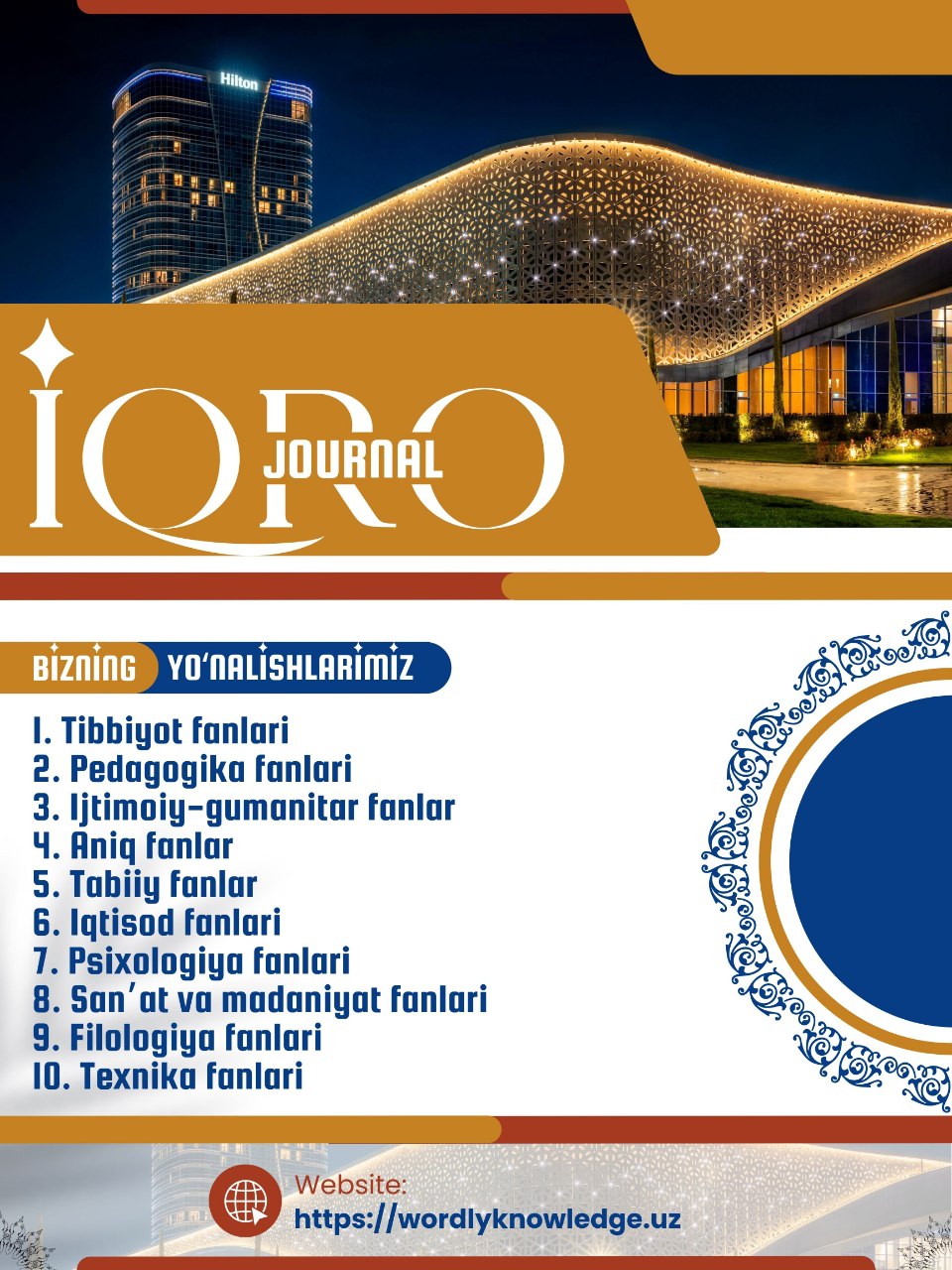COMPARATIVE ANALYSIS OF NEW GENERATIONS OF HYPOTENSIVE DRUGS AND THEIR CLINICAL IMPORTANCE
Keywords:
Hypertension, Calcium Channel Blockers (CCBs), Dihydropyridine CCBs, Antihypertensive Drugs, Cilnidipine, Amlodipine, Blood Pressure Control, Organ Protection, Sympathetic Nervous System, Peripheral Edema, Geriatric Hypertension, Personalized Medicine, Drug Development.Abstract
Hypertension, affecting approximately 1.28 billion adults globally, remains a leading cause of cardiovascular morbidity and mortality. Effective management of this "silent killer" relies heavily on antihypertensive medications, which have evolved significantly over the years. This article provides a comparative analysis of the latest generations of calcium channel blockers (CCBs), focusing on their advancements, clinical effectiveness, safety profiles, and impact on long-term patient outcomes. First-generation dihydropyridine CCBs (e.g., nifedipine) laid the foundation but were limited by short duration, reflex tachycardia, and side effects like peripheral edema. Second-generation CCBs (e.g., felodipine) improved targeting, duration, and tolerability. Third-generation agents (e.g., amlodipine) introduced once-daily dosing, superior vascular selectivity, and reduced reflex tachycardia. Fourth-generation CCBs, exemplified by cilnidipine, represent a breakthrough with dual L-type and N-type calcium channel blockade, offering enhanced organ protection, reduced sympathetic activation, and minimal side effects. Clinical studies demonstrate progressive improvements in blood pressure control, with newer generations achieving 25-35% reductions and significantly lower rates of peripheral edema. These advancements are particularly beneficial for elderly patients, diabetics, and those with kidney disease. Future directions include personalized medicine, nanotechnology-based drug delivery, and fifth-generation CCBs with enhanced tissue selectivity. This review highlights the transformative impact of newer antihypertensive drugs, emphasizing their role in optimizing hypertension management and improving patient outcomes worldwide.
References
1. Global Hypertension Statistics:
- World Health Organization (WHO). (2021). Hypertension. Retrieved from [https://www.who.int/news-room/fact-sheets/detail/hypertension](https://www.who.int/news-room/fact-sheets/detail/hypertension).
2. AHA Hypertension Guidelines:
- Whelton, P. K., et al. (2017). 2017 ACC/AHA/AAPA/ABC/ACPM/AGS/APhA/ASH/ASPC/NMA/PCNA Guideline for the Prevention, Detection, Evaluation, and Management of High Blood Pressure in Adults. Journal of the American College of Cardiology, 71(19), e127-e248.
3. Calcium Channel Blockers (CCBs):
- Epstein, B. J., & Vogel, K. (2008). Calcium Channel Blockers: Pharmacologic Properties and Clinical Applications. Journal of Clinical Hypertension, 10(9), 691-699.
- Godfraind, T. (2017). Calcium Channel Blockers in the Treatment of Hypertension. Advances in Pharmacology, 78, 203-237.
4. Cilnidipine and Dual-Channel Blockade:
- Fujita, T., & Ando, K. (2004). Hemodynamic and Hormonal Effects of Cilnidipine, a Novel Dual L/N-Type Calcium Channel Blocker, in Patients with Chronic Kidney Disease. Hypertension Research, 27(12), 929-934.
- Konda, T., et al. (2011). Cilnidipine: A New Generation Ca Channel Blocker with Inhibitory Effects on Sympathetic Neurotransmission. Cardiovascular Drug Reviews, 29(3), 235-248.
5. Elderly Patients and Antihypertensive Therapy:
- Beckett, N. S., et al. (2008). Treatment of Hypertension in Patients 80 Years of Age or Older. New England Journal of Medicine, 358(18), 1887-1898.
6. Future Directions in Hypertension Management:
- Williams, B., et al. (2018). 2018 ESC/ESH Guidelines for the Management of Arterial Hypertension. European Heart Journal, 39(33), 3021-3104.














